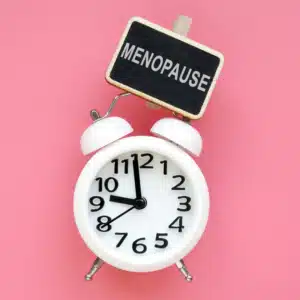
Effects of menopause on fibroids
Because fibroids grow in part due to the amount of estrogen in a woman’s body, the changes in hormones that come with menopause can cause them to stop growing and even shrink—but it may not be enough to make them go away altogether.
Another thing to remember is that if a woman is taking hormone replacement therapy to help live with menopause, she’ll likely continue to experience fibroid-related symptoms.
Every woman’s body is different. Menopause may not cause fibroids to shrink at all, and they may even continue growing and cause bothersome symptoms.
Symptoms of fibroids following menopause
Some fibroid-related symptoms that may persist after menopause include:
- Pelvic pressure: You may continue to experience pain similar to cramps before a period. This pain can be severe and can be a result of fibroids pressing on the walls of the uterus and surrounding organs.
- Urinary urgency: If fibroids are pushing on the bladder, it can cause you to urinate frequently.
- Abdominal bloating: Depending on the size of fibroids, they may cause your abdomen to become enlarged, resembling a pregnancy.
Treatment options
Many of the same treatments available before menopause remain options.
One treatment is uterine fibroid embolization (ufe), a minimally invasive procedure performed by a doctor called an interventional radiologist. Taking less than one hour, ufe involves a small incision to the radial artery in the wrist or the femoral artery in the groin area. The doctor then inserts a small tube into the incision and guides it through the artery to the fibroids.
Tiny spheres called embolic material are injected into the vessel that’s supplying blood to the fibroids. The goal is to block the blood supply to the fibroids, so they’ll stop growing and begin to shrink.
ufe is typically performed as an outpatient procedure, meaning you’d be able to go home the same day you have treatment. Recovery time differs for every woman, but it commonly takes one week to 10 days, enabling you to then return to a lifestyle you enjoy—without the pain of uterine fibroids.
Learn more
If you’re suffering from fibroids, the best thing is not to wait to have treatment. While menopause does improve symptoms and conditions for some women, it’s impossible to know whether it’ll work for you. Talk to your doctor today to develop a care plan that’s right for you.
To find a doctor in your area who can perform the ufe procedure, use our Find a UFE Specialist tool.
PLEASE NOTE: The above information should not be construed as providing specific medical advice, but rather to offer readers information to better understand their lives and health. It is not intended to provide an alternative to professional treatment or to replace the services of a physician.






